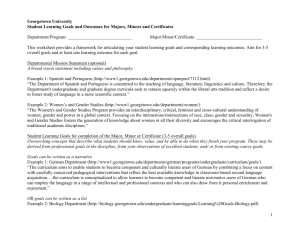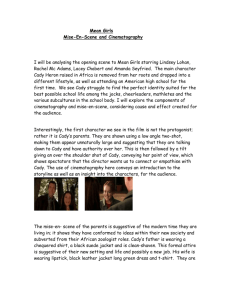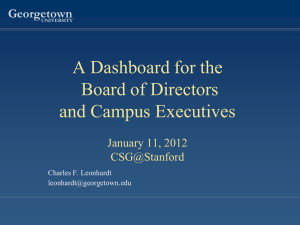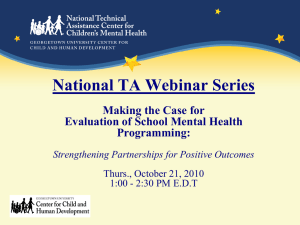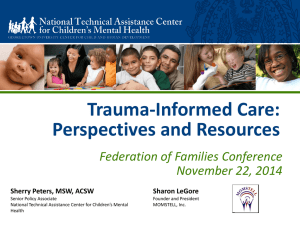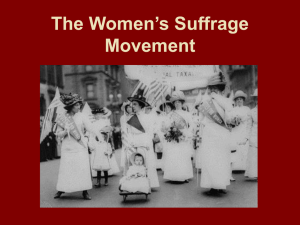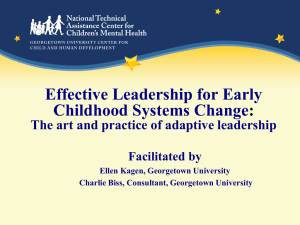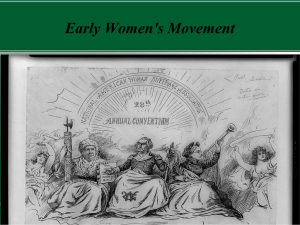Trauma-Informed Method of Engagement
advertisement
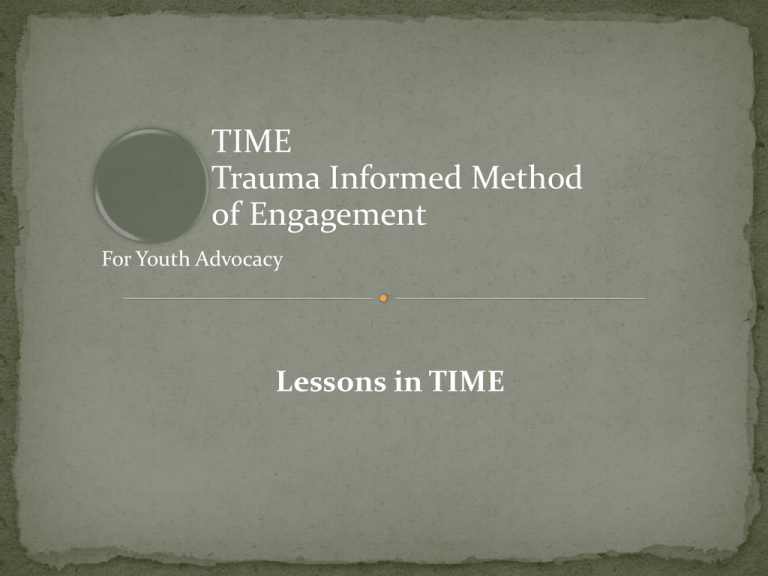
TIME Trauma Informed Method of Engagement For Youth Advocacy Lessons in TIME Eric Lulow, BSW Substance Abuse and Mental Health Services Administration, Public Health Advisor Alumnus of Foster Care Debra Cady, MSW, LCSW Substance Abuse and Mental Health Services Administration, Public Health Advisor Adjunct Assistant Professor, Georgetown University Write down the following: A traumatic experience that happened to you in your childhood/growing up. One of the worst things you ever did when you were a teenager/young adult. One of your most embarrassing moments in your childhood, adolescence or young adulthood. Things/people that helped you through these tough times. Introduction and History of the Trauma-informed Method of Engagement (TIME) model TIME Model – 4 Components TIME and Self-efficacy © Georgetown University 2012, Cady, DA & Lulow, EC A youth or young adult advocate is a person who has lived experience in one or more child serving systems who use their personal stories as a mechanism to create messages for system change. Youth Advocacy places youth and young adults in a position of vulnerability as they face the thoughts, feelings, emotions, places, people and activities that are potential triggers to their trauma backgrounds. PREPARATION Creating a safe state of readiness and expertise RELATIONSHIP Establishing REFLECTION Processing thoughts and feelings to build skills and promote healing Trust and Rapport SUPPORT Assuring physical, emotional and professional needs are met © Georgetown University 2012, Cady, DA & Lulow, EC Take the trauma into account Avoid triggering trauma reactions and/or traumatizing the individual Adjust the behavior of counselors, other staff and the organization to support the individual’s coping capacity Allow survivors to manage their trauma symptoms successfully so that they are able to access, retain and benefit from the services Safety: Ensure physical and emotional safety and paying attention to discomfort or unease Trustworthiness: Maximize trust and establish clear and appropriate tasks and boundaries Choice: Collaboration: Empowerment: Maximize choices and control over the event Youth voices are elicited and validated, recognizing their strengths, respect for their lived experience and sharing the power Provide opportunities to enhance skills and confidence to further personal and professional development This model is relationallybased and trauma-informed. Supportive adults and/or peer mentors are utilized to minimize the negative impact of re-experiencing trauma for young advocates through effective engagement, preparation and support strategies. © Georgetown University 2012, Cady, DA & Lulow, EC YEEEEEEEE!!! Splash!! Lulow, E Confidential File Eric Lulow © Georgetown University 2012, Cady, DA & Lulow, EC PREPARATION Creating a safe state of readiness and expertise RELATIONSHIP Establishing REFLECTION Processing thoughts and feelings to build skills and promote healing Trust and Rapport SUPPORT Assuring physical, emotional and professional needs are met © Georgetown University 2012, Cady, DA & Lulow, EC Relationship Set boundaries together Meet in a safe environment Assess if immediate needs are met Learn about their interests and goals Develop a safety plan Learn about trauma triggers and coping Skills Find shared experiences, common ground RELATIONSHIP: ESTABLISHING TRUST AND RAPPORT Find out what they are worried about Learn about their culture and values Learn about their social network Find out who they consider family © Georgetown University 2012, Cady, DA & Lulow, EC Preparation Provide trainings based on event type Describe the event/meeting, agenda and audience Study the topic and Identify hot issues Help develop messages and methods of delivery Review dress code and Time to be there Travel to the meeting/event area, if possible Preparation Review every logistical detail of the event Provide strategic sharing training Practice delivery of the message with technology Create a plan of action for trauma triggers Practice Q/A and develop plan for tough questions © Georgetown University 2012, Cady, DA & Lulow, EC Support Assure basic debriefing occurs immediately following the meeting/event Rehearse the speech or message(s) to be delivered Review logistical details, again Implement safety plan, if necessary Provide ongoing encouragement and reassurance Create a contingency plan Support Review and utilize nonverbal cues Review the safety plan Designate an adult support partner/peer mentor Assess environmental factors © Georgetown University 2012, Cady, DA & Lulow, EC Reflection Find additional advocacy and networking opportunities Debrief the event Provide acknowledgement Develop goals for personal and professional development Create promotional strategies: cards, calendar, website and follow up Assess for discomfort and unease Reflection Make connections to relevant resources Implement coping strategies and safety plan Discuss strengths and areas for growth Debrief the event more thoroughly © Georgetown University 2012, Cady, DA & Lulow, EC Self-Efficacy “The belief in one’s capabilities to organize and execute the courses of action required to manage prospective situations” (Bandura, Albert; 1994) Four Major Sources of Self-efficacy Mastery Experiences (Bandura, Albert; 1994) Social Modeling Social Persuasion Psychological Responses In your role, what will you do differently, if anything, as a result of learning about this model? © Georgetown University 2012, Cady, DA & Lulow, EC National Resource Center on Youth Development http://www.nrcyd.ou.edu/publications/Youth%20Leadership%20Toolkit/All Casey Family Programs http://www.casey.org/Resources/Publications/pdf/StrategicSharing.pdf National Federation of Families and Pathways RTC http://www.pathwaysrtc.pdx.edu/pdf/pbStrategicSharingGuide.pdf Youth M.O.V.E. National http://www.youthmovenational.org/youth-advocacy-and-policy Youth Advocacy Training Webinar Series Youth M.O.V.E. National speech template Youth Voice in Policy Guide http://www.youthmovenational.org/sites/default/files/pbYouthVoiceInPolicy_0.pdf © Georgetown University 2012, Cady, DA & Lulow, EC Eric Lulow, BSW Eric.lulow@samhsa.hhs.gov Debra Cady, MSW, LCSW Debra.cady@samhsa.hhs.gov © Georgetown University 2012, Cady, DA & Lulow, EC
